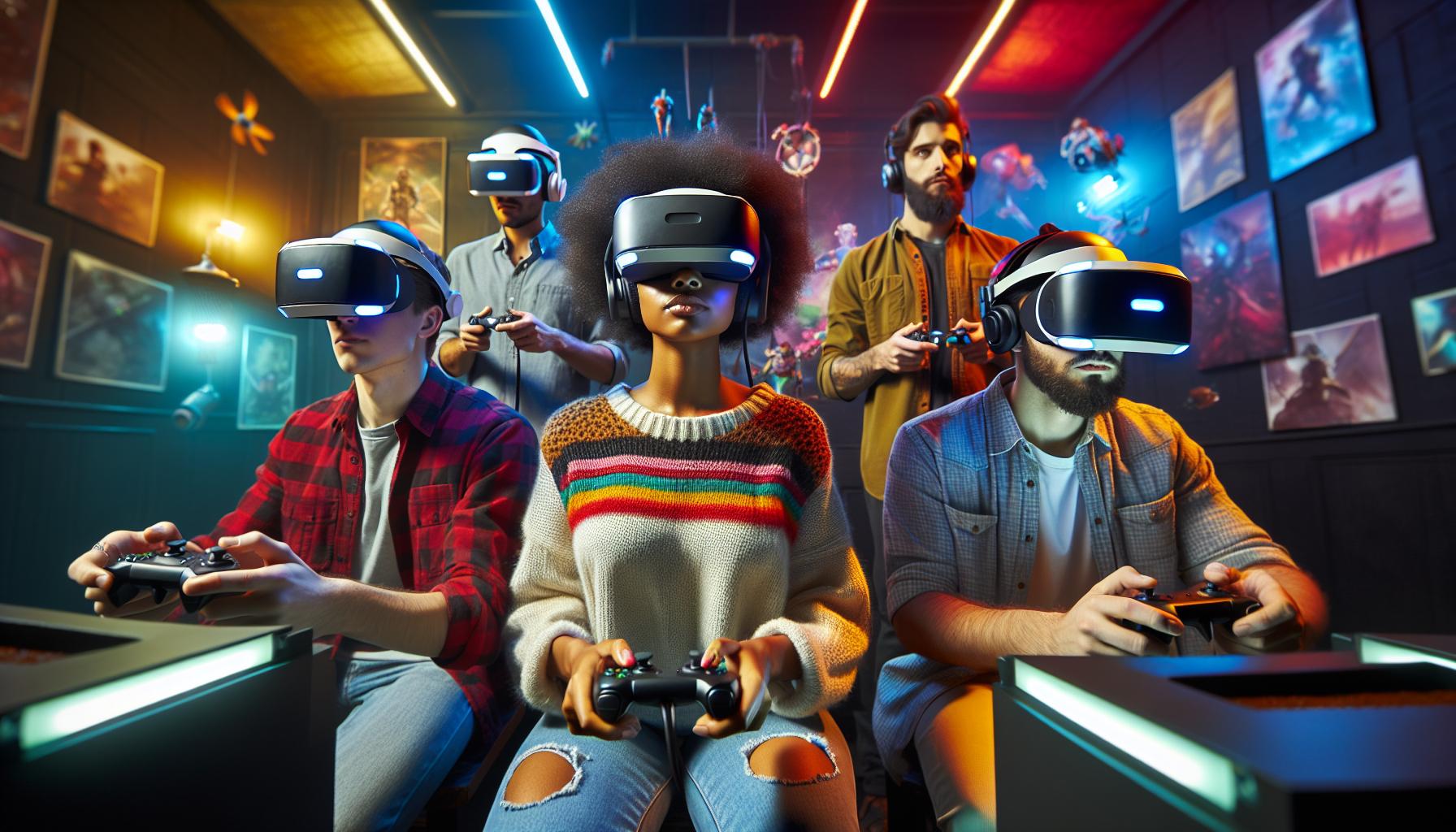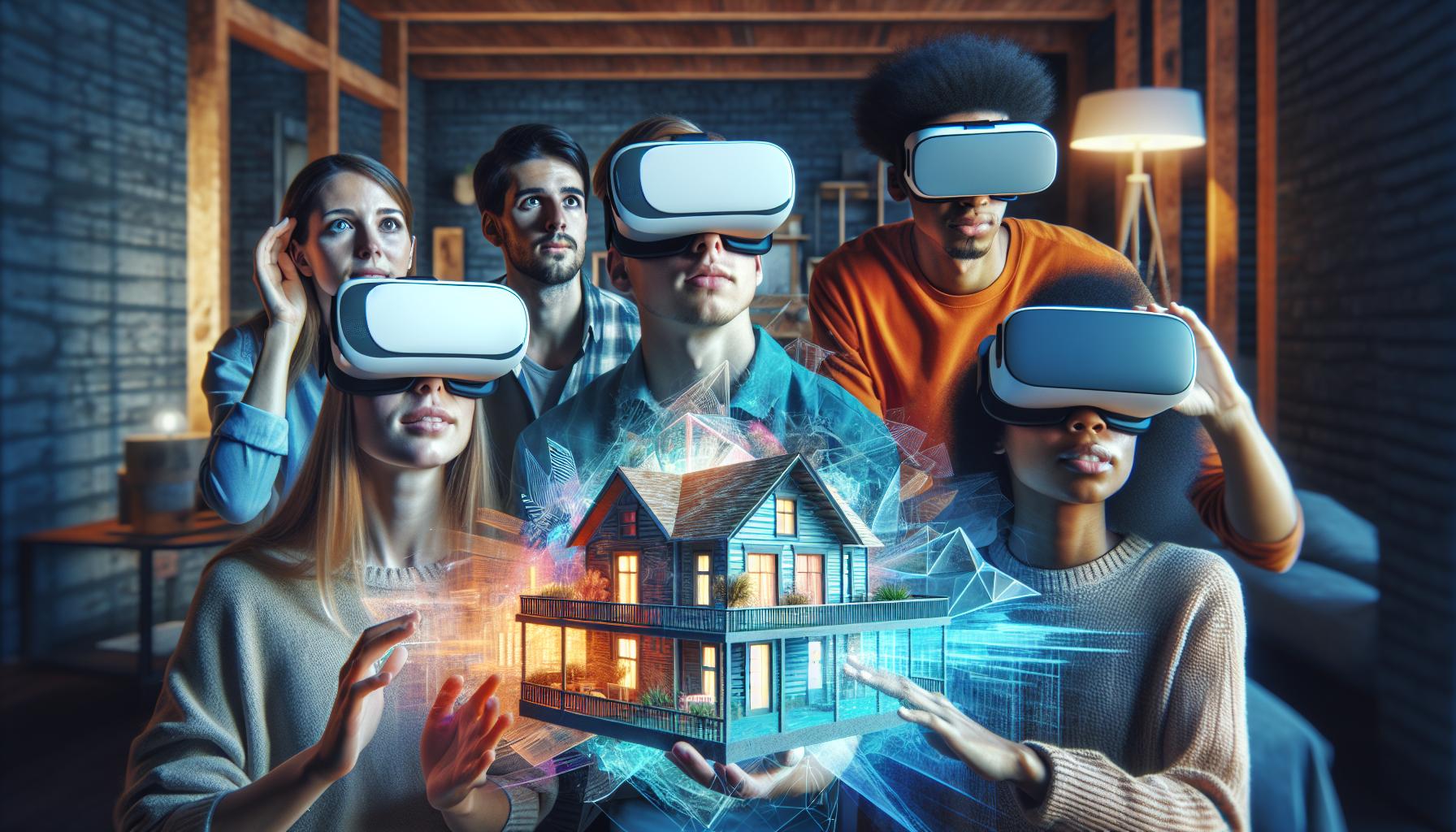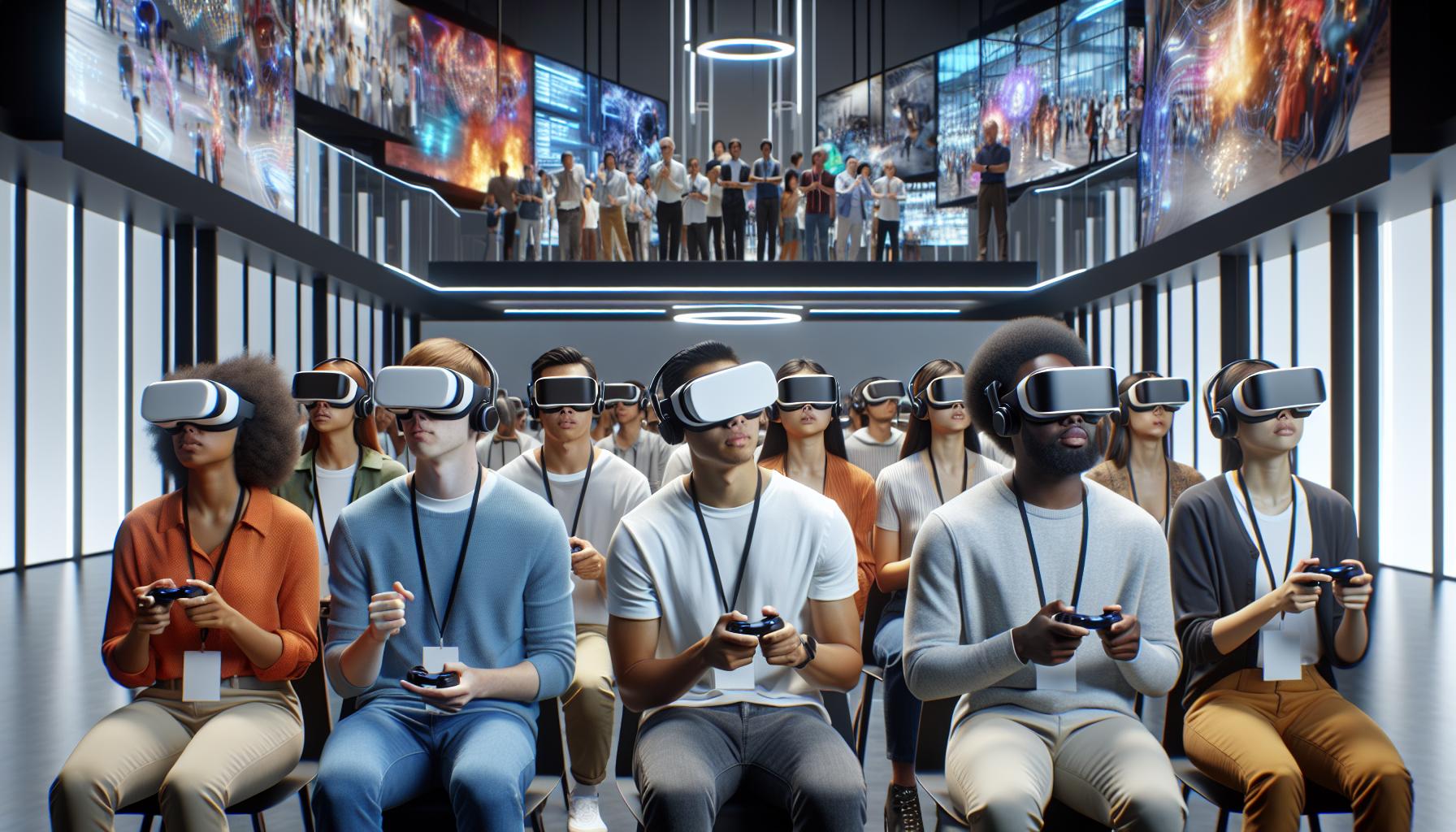Key Takeaways
- Definition and Components: Virtual reality (VR) immerses users in simulated environments through key components like head-mounted displays (HMDs), motion tracking sensors, and input devices.
- Industry Applications: VR technology is transforming various sectors, including entertainment and gaming, education and training, and healthcare, enhancing user engagement and experience.
- Benefits of VR: VR offers immersive experiences and enhanced learning outcomes, facilitating skills development and better retention of information in educational contexts.
- Challenges to Adoption: Technical barriers, including high costs and user discomfort, alongside user acceptance issues, are significant challenges that hinder the widespread adoption of VR technology.
- Future Trends: Advancements in VR hardware and an expanding array of use cases indicate that the technology will continue to grow, with potential applications in remote learning, mental health, and more.
- Revolutionizing Interaction: VR is not just for gaming—it’s increasingly used in fields like real estate and corporate training, showcasing its versatility and transformative impact across industries.
Virtual reality technology is reshaping how people interact with digital content, creating immersive experiences that transport users to entirely new worlds. As advancements in hardware and software continue to evolve, VR is no longer just a tool for gamers; it’s finding applications in education, healthcare, and even real estate.
With its ability to simulate real-life scenarios and environments, virtual reality is revolutionizing training methods and enhancing user engagement. Businesses are leveraging this technology to improve customer experiences, while educators are discovering innovative ways to teach complex subjects. As VR becomes more accessible, its potential to transform various industries is becoming increasingly apparent.
Virtual Reality Technology
Virtual reality (VR) technology immerses users in a simulated environment, allowing interaction with 3D worlds via specialized hardware. This innovative approach is reshaping experiences across diverse industries.
Definition and Key Components
Virtual reality is a computer-generated environment that replicates real or imagined settings. Key components of VR include:
- Head-Mounted Displays (HMDs): Devices worn on the head that provide visuals, such as Oculus Rift and HTC Vive.
- Motion Tracking Sensors: Tools that track user movements, enhancing immersion.
- Input Devices: Controllers or gloves enabling user interaction within VR environments.
- Audio Systems: Spatial audio technology providing realistic sound experiences.
These components work together to create an engaging and interactive experience.
History and Evolution
Virtual reality’s origins trace back to the 1960s, marked by the development of “The Sensorama,” which combined visuals, sound, and vibrations. Significant milestones include:
- 1980s: Introduction of VR headsets, like the VPL DataGlove, used mainly in research and military applications.
- 1990s: Commercial interest grew, with systems like the Sega VR and Virtuality arcade games gaining attention, despite limited technological capabilities.
- 2010s: Major advancements occurred with the launch of affordable consumer headsets like Oculus Rift, leading to widespread adoption in gaming, entertainment, and professional training.
The technology’s evolution emphasizes ongoing improvements in hardware and software, expanding VR’s applicability across various sectors.
Applications of Virtual Reality Technology

Virtual reality technology finds extensive applications across several industries. Its immersive nature enhances user experiences, making it a valuable tool in entertainment, education, and healthcare.
Entertainment and Gaming
Entertainment and gaming stand as the most prominent applications of virtual reality. VR gaming creates immersive environments, allowing players to interact within 3D worlds. Titles like “Beat Saber” and “Half-Life: Alyx” showcase the capabilities of VR, engaging players in ways traditional gaming cannot. VR experiences extend beyond gaming, with virtual concerts and events providing unique, interactive entertainment options for thousands simultaneously.
Education and Training
Education and training utilize virtual reality to enhance learning experiences. VR allows students to explore complex subjects, such as anatomy or history, through immersive simulations. Medical students can practice surgical procedures in a risk-free environment, while engineering students can manipulate 3D models. Corporate training programs employ VR to simulate high-pressure situations, enabling employees to develop essential skills without real-world consequences.
Healthcare and Therapy
Healthcare applications of virtual reality encompass patient treatment and medical training. Therapists use VR for exposure therapy, helping patients confront phobias in controlled settings. Surgical training benefits from realistic simulations, offering trainees hands-on experience essential for skill development. Additionally, VR aids in pain management, distracting patients during procedures and enhancing their overall experience.
Benefits of Virtual Reality Technology

Virtual reality (VR) technology offers numerous advantages, significantly enhancing experiences across various sectors. Its capacity to create rich, engaging scenarios improves interaction and learning.
Immersive Experiences
VR technology provides immersive experiences that deeply engage users, making them feel present in a virtual environment. Users can interact with 3D objects and environments, which fosters a sense of realism. For instance, VR simulations in real estate enable potential buyers to explore properties remotely. Users can examine details and features of homes, leading to informed decision-making. Additionally, VR enhances entertainment by placing users in the midst of thrilling narratives, such as simulation games and virtual concerts, offering an unparalleled level of engagement.
Enhanced Learning Outcomes
VR enhances learning outcomes by transforming traditional education methods. The technology allows students to explore concepts through immersive simulations, leading to improved retention of information. Research indicates that learners using VR demonstrate better understanding and performance in complex subjects, such as science and history. In corporate training, VR facilitates skill development by simulating real-world scenarios, allowing individuals to practice in a safe environment. This method is proven to enhance critical thinking and problem-solving skills, resulting in more effective and confident trainees.
Challenges and Limitations

Despite its transformative potential, virtual reality technology faces several challenges and limitations that hinder widespread adoption. Addressing these issues is essential for the continued growth and effectiveness of VR applications.
Technical Barriers
Technical barriers significantly impact VR’s accessibility and performance. Hardware requirements for immersive experiences often involve expensive components, including high-performance computers and advanced headsets. Users encounter issues like motion sickness, resulting from latency or poor frame rates, which can diminish the overall experience. Compatibility problems also arise, as not all software works seamlessly across various VR platforms, leading to fragmented user experiences. Furthermore, the need for space and dedicated setup poses challenges for home users and educational institutions alike. These technical limitations restrict VR’s appeal beyond early adopters and create hurdles for broader implementation in various sectors.
User Acceptance
User acceptance remains a crucial factor in the mainstream adoption of VR technology. Many potential users express concerns regarding the comfort and usability of VR systems. Wearing headsets for extended periods can lead to discomfort or disorientation, affecting user satisfaction. Additionally, unfamiliarity with VR technology can deter users who are unsure how to interact within virtual environments. Education and awareness initiatives are necessary to alleviate these concerns and demonstrate the value of VR applications across different fields. Adapting VR experiences to cater to diverse user preferences and creating intuitive interfaces may enhance user acceptance, broadening the audience for VR technology.
Future Trends in Virtual Reality Technology
Future trends in virtual reality (VR) technology indicate significant advancements that will shape how users interact with digital environments. As technology evolves, new hardware and innovative applications emerge, enhancing user experiences across various sectors.
Advancements in Hardware
Advancements in hardware drive the future of VR technology. Companies focus on producing lighter and more comfortable head-mounted displays (HMDs), enhancing user comfort and extending usage durations. Improvements in motion tracking systems increase accuracy, allowing users to move more freely within virtual spaces. Integrating haptic feedback supports a more immersive experience by simulating touch interactions. Enhanced audio systems, including spatial audio, make environments feel more realistic, enriching the overall user experience. Wireless technology eliminates cables, enhancing mobility and promoting longer engagement. These developments collectively push VR closer to mainstream adoption.
Expanding Use Cases
Expanding use cases demonstrate VR’s versatility across various industries. In education, institutions adopt VR for remote learning, creating virtual classrooms that replicate face-to-face engagement. In architecture and design, VR allows professionals to visualize projects in 3D before construction, helping streamline the planning process. In mental health, clinicians use VR for therapeutic applications, providing immersive environments for exposure therapy. In tourism, virtual experiences offer users tours of destinations without physical travel, broadening access to exploration. These diverse applications highlight VR’s potential beyond entertainment, positioning it as a transformative tool across multiple fields.
Virtual Reality Technology
Virtual reality technology stands at the forefront of innovation, reshaping how individuals interact with digital content. Its applications span diverse industries, driving advancements in education, healthcare, and entertainment. As VR becomes more accessible, its ability to create immersive experiences will continue to enhance user engagement and training methodologies.
The ongoing evolution of VR hardware and software promises even greater possibilities, paving the way for widespread adoption. With the potential to revolutionize traditional practices, VR is not just a passing trend but a powerful tool that will redefine how people learn, train, and experience the world around them. The future of VR looks bright, offering exciting opportunities for both personal and professional growth.